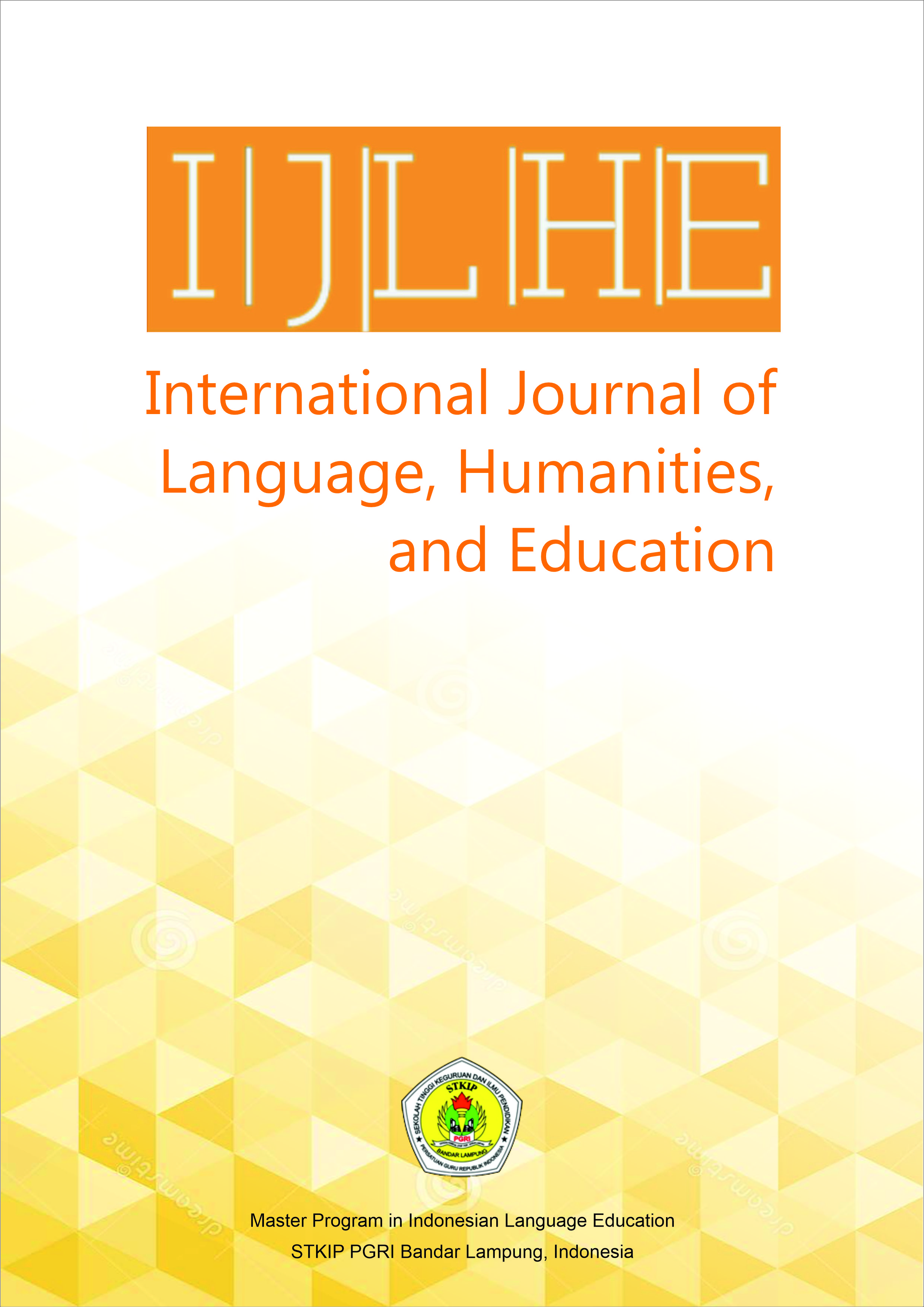Swear Words Used by Japanese: A Descriptive Qualitative Study
DOI:
https://doi.org/10.52217/ijlhe.v8i1.1815Keywords:
Forms, Function, Japanese Swear Words, ReferencesAbstract
This study explores the use of swear words in the Japanese language, focusing on their forms, references, and communicative functions. The aim is to identify the types of swear words used by native speakers, analyze their morphological structures, and understand the meanings and roles they play in social interaction. A descriptive qualitative approach was used, employing interviews and document analysis as primary data collection methods. Instruments included the researcher as the key instrument, supported by document analysis sheets and interview guides. Data were collected from three native Japanese speakers, supplemented with related texts and online sources. The study identified 41 Japanese swear words categorized into 14 monomorphemic words, 17 polymorphemic words, 13 phrases, and 6 clauses. The references of these words varied, including sex (4), excrement (4), animals (4), mental illness (2), and death (3). Functionally, the swear words were used to express emotions (15), show aggression (12), deliver insults (20), emphasize a point (1), and establish group identity or solidarity (3). The findings reveal the complexity of swearing in Japanese, showing that such expressions play an important role in emotional release, group belonging, and social confrontation. This study enhances the understanding of Japanese sociolinguistics and pragmatics.
References
Abu-Rayyash, H., Haider, A. S., & Al-Adwan, A. (2023). Strategies of translating swear words into Arabic: A case study of a parallel corpus of Netflix English-Arabic movie subtitles. Humanities and Social Sciences Communications, 10(1). https://doi.org/10.1057/s41599-023-01506-3
Hamilton, A. B., & Finley, E. P. (2019). Qualitative methods in implementation research: An introduction. Psychiatry Research, 280, 112516. https://doi.org/10.1016/j.psychres.2019.112516
Jay, T. (2009). The utility and ubiquity of taboo words. Perspectives on Psychological Science, 4(2), 153–161. https://doi.org/10.1111/j.1745-6924.2009.01115.x
Khusna, F. A., Sekar Pertiwi, I., & Eskarina, E. (2021). Indonesian youths’ perception toward swearing and taboo expression. Curricula: Journal of Teaching and Learning, 6(2). https://doi.org/10.22216/jcc.2021.v6i2.277
Sari, A. Y., & Haristiani, N. (2024). Contrastive analysis of profanity expressions in Japanese and Indonesian languages on Twitter (pp. 16–24). https://doi.org/10.2991/978-94-6463-376-4_4
Shen, Z., Pang, B., Li, X., & Chen, Y. (2024). An exploration of Japanese cultural dynamics communication practices through social pragmatics. Journal of Pragmatics and Discourse Analysis, 3(1), 60–72. https://doi.org/10.32996/jpda.2024.3.1.4
Soysal, Y., & Soysal, S. (2024). Exploring prospective classroom teacher question types for productive classroom dialogue. ECNU Review of Education, 7(4), 1054–1088. https://doi.org/10.1177/20965311221109283
Stapleton, K. (2020). Swearing and perceptions of the speaker: A discursive approach. Journal of Pragmatics, 170, 381–395. https://doi.org/10.1016/j.pragma.2020.09.001
Stokhof, H. J. M., De Vries, B., Martens, R. L., & Bastiaens, T. J. (2017). How to guide effective student questioning: A review of teacher guidance in primary education. Review of Education, 5(2), 123–165. https://doi.org/10.1002/rev3.3089
Vingerhoets, A. J. J. M., Bylsma, L. M., & De Vlam, C. (2013). Swearing: A biopsychosocial perspective. Psychological Topics, 22(2), 287–304. http://hrcak.srce.hr/file/159883
Wang, A., Chai, C. S., & Hairon, S. (2017). Exploring the impact of teacher experience on questioning techniques in a knowledge building classroom. Journal of Computers in Education, 4(1), 27–42. https://doi.org/10.1007/s40692-016-0057-2
Wu, L., Liu, Y., How, M.-L., & He, S. (2023). Investigating student-generated questioning in a technology-enabled elementary science classroom: A case study. Education Sciences, 13(2), 158. https://doi.org/10.3390/educsci13020158














